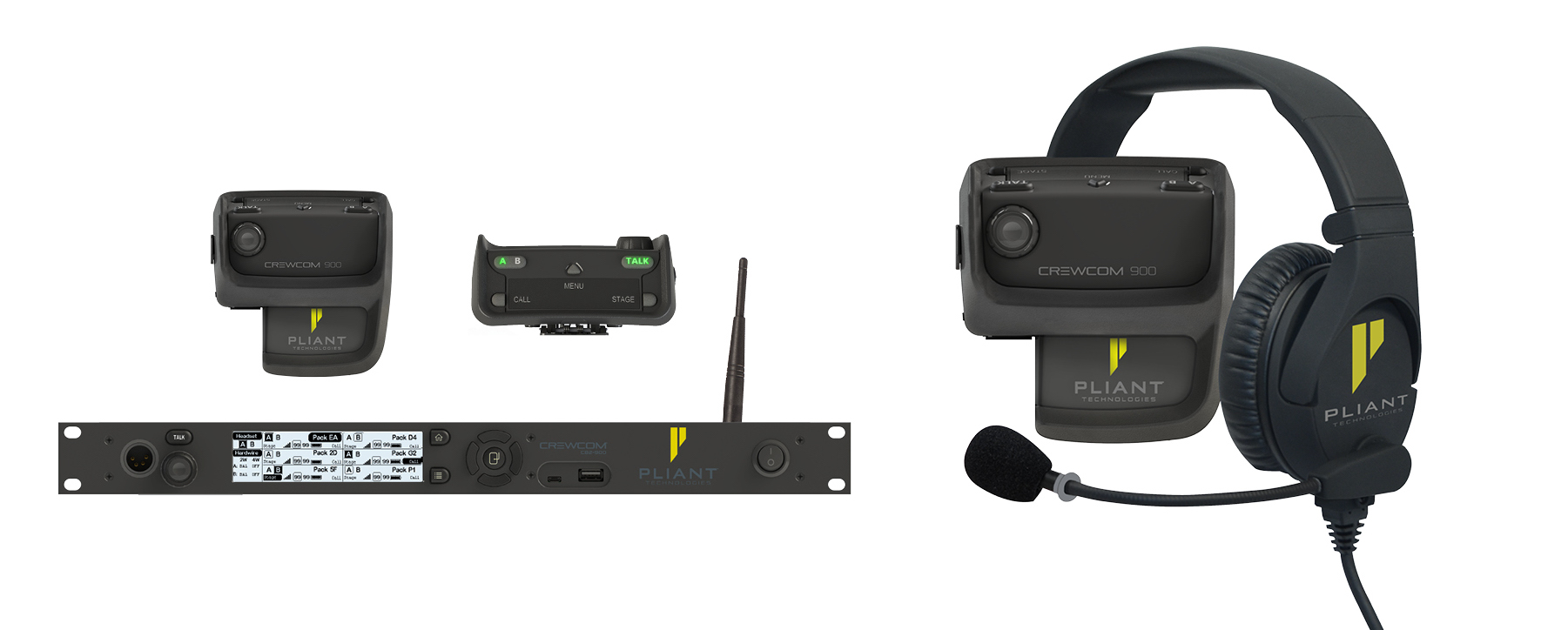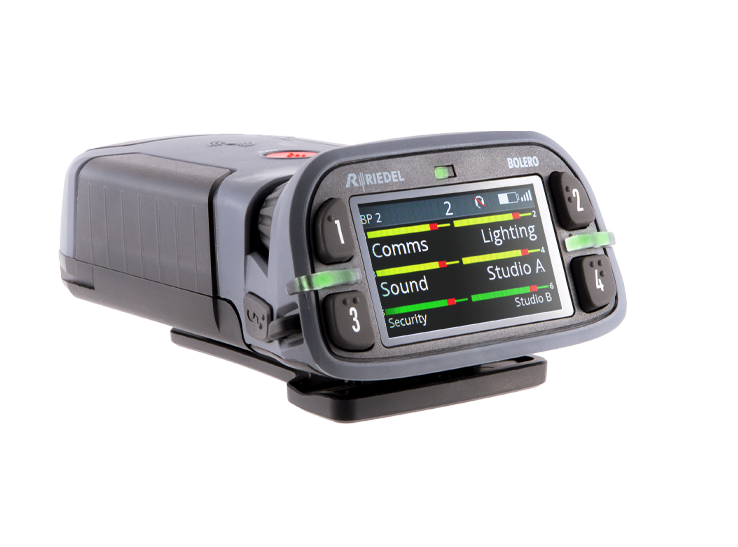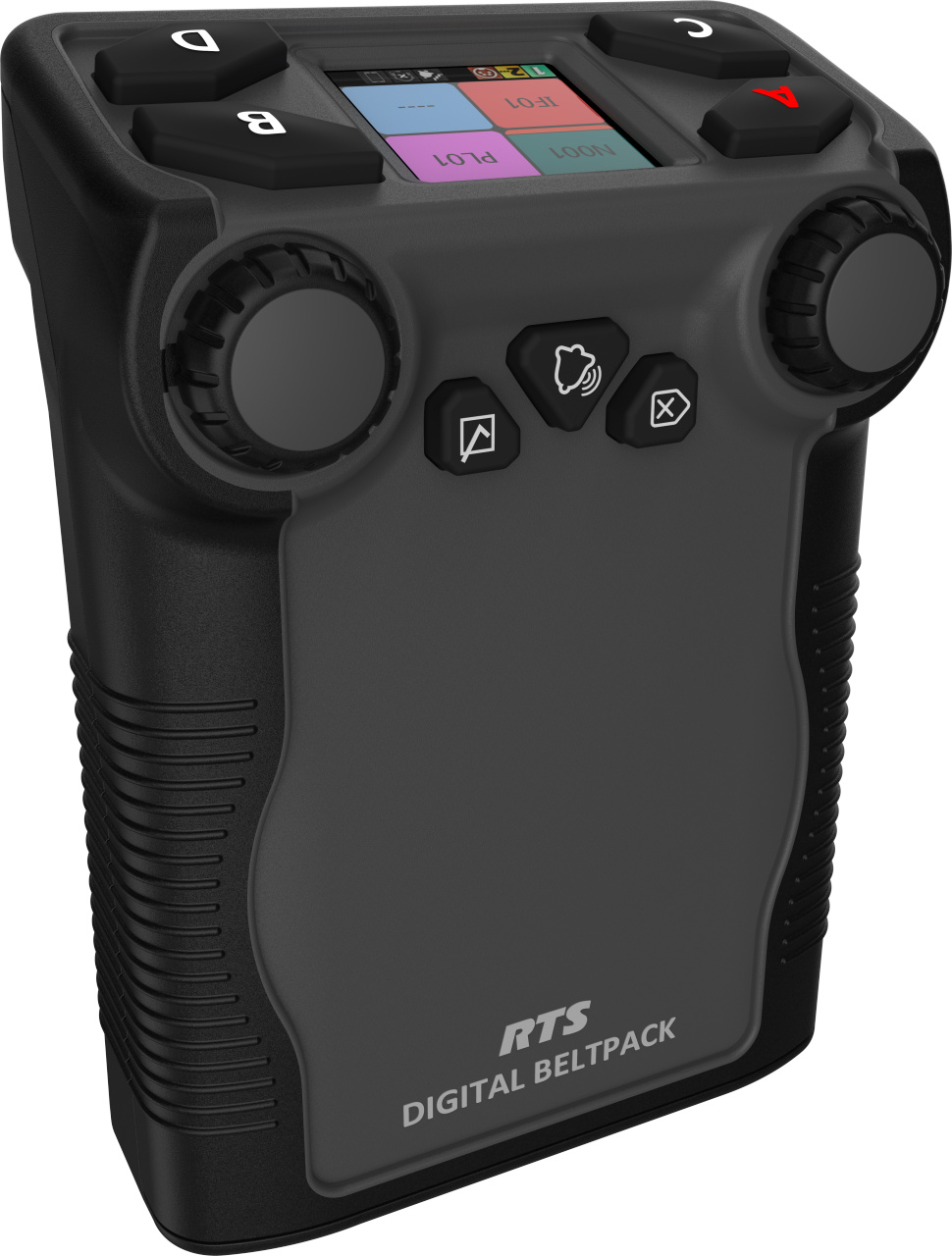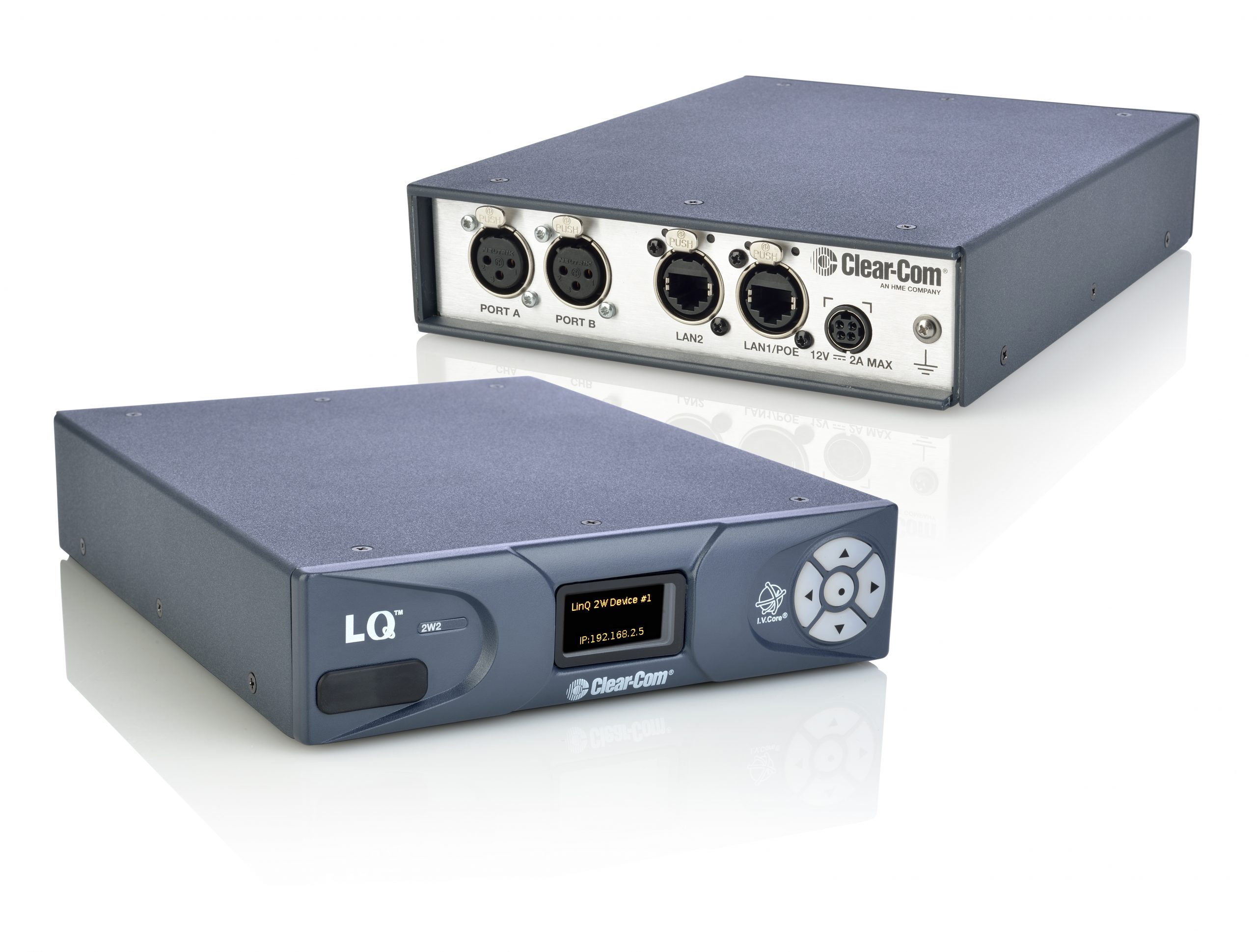Tech Focus: Intercoms, Part 2 — What’s on the Market
Flexible, easy-to-use offerings target booming remote-production sector
Story Highlights
By pro-audio standards, intercoms constitute a small market sector, but it’s a critical one — and, in the age of supercharged REMI productions, an increasingly competitive one. Here’s a look at the latest offerings from the market leaders.
Pliant Technologies
The CrewCom wireless intercom system features full-duplex wireless radio packs and extreme range, with multiple RF access points that connect via copper (100 m) or fiber (10 km). CrewCom wireless products are available in 2.4 GHz and 900 MHz models (the latter are limited to where this band is legal). Any combination of these frequency bands may be used simultaneously on the same CrewCom system, providing the ability to put RF coverage where needed while deploying a consistent user interface throughout the system. For larger applications, CrewCom offers a significant price advantage over the cost of deploying multiple wireless users in a production.
Pliant’s newest wireless intercom offering, CrewCom CB2, available in 2.4 GHz and 900 MHz, offers the same proven CrewCom wireless technology while also providing ease of use and high-level performance at an affordable price point for a full-featured intercom system. CB2’s straightforward design makes it fast and easy to set up but powerful enough for full-time professionals. With CB2, it’s now possible to have up to six full-duplex wireless users on one system or to easily add a second system for up to 12 users without compromising audio quality or coverage.
Pliant’s MicroCom XR digital wireless intercom system provides full-duplex, multi-user intercom for applications where high-quality audio, extended range, and affordability are essential. The system is a robust two-channel intercom system available in 2.4 GHz and 900 MHz and features ease of use, extended range, and the ability to have up to 10 full-duplex users and unlimited listeners, providing flexibility for a range of applications. www.plianttechnologies.com/
Riedel
Artist digital-matrix audio and intercom ecosystem handles a wide range of audio formats: AES3, AES67 (including SMPTE ST 2110-30/31), AVB, Dante, VoIP, and analog. The system consists of a fiber-based backbone providing a decentralized infrastructure for live audio and intercoms with matrix sizes up to 1024×1024 ports in just 2RU. Multiple frames can be interconnected via dual optical-fiber rings to form a single large, full-summing, non-blocking distributed matrix that looks like one system to the user. The Director configuration software is easy to use and boasts the industry’s fastest upload times, according to Riedel.
Bolero is a full-roaming, DECT-based wireless intercom system in the license-free 1.9 GHz frequency range. Fully integrated into the Artist digital-matrix intercom or used as standalone, Bolero offers robust features that can be applied as a wireless beltpack, a wireless keypanel, or a two-way radio. New technologies power Bolero’s capabilities: an Advanced DECT Receiver (ADR) for multipath tolerance improvement and near-field communication (NFC) for easy, “Touch&Go” beltback registration. Bolero also features six channels, Bluetooth connectivity, and nearly 18 hours of battery life. Three network modes are available for Bolero systems, each dedicated to specific applications:
- Bolero Integrated leverages the Artist infrastructure, including SmartPanels and extensive I/O connectivity.
- Bolero Standalone Link provides plug-and-play simplicity especially suited to smaller installations, portable deployments, or cases when Bolero needs to be interfaced to other systems without the need for an Artist matrix.
- Bolero Standalone 2110 (AES67) enables users to set up a standards-based (SMPTE ST 2110/AES67) IP network with no Artist required.
For additional usability, the newly released TARN is an ultra-lightweight in-ear headset for demanding environments that require maximum intelligibility and a secure fit. The noise-canceling microphone offers a secure clip-on mic-boom and an XLR connector.
The 1200 Series SmartPanels feature multiple full-color multitouch displays, innovative hybrid-lever keys, the ability to leverage apps for multifunctionality, and easy adaptability to the various workflows in use today. Uniting powerful intercom, control, and audio-monitoring functionalities in a single keypanel, the 1200 Series SmartPanels deliver a combination of capabilities that empowers users while saving valuable rack or desk space. Besides the 2RU RSP-1232HL with 32 lever keys and stereo speakers, a 1RU version is available: the RSP-1216HL comes with the same feature set as its big brother but with 16 lever keys and one full-range speaker. All 1200 Series SmartPanels natively support AES67, including SMPTE ST 2110-30/31, and can be connected to the host network via Fiber SFP or Copper RJ45 connections. There are actually two Fiber SFP cages and two copper RJ45 connections, offering a variety of daisy-chaining and redundancy options allowing cabling flexibility. www.riedel.net/en/
RTS
The new DBP four-channel/four-button wired beltpack runs on PoE (802.3af and 802.3at) and connects using OMNEO IP technology (Dante, AES70, and more). Its hybrid design supports both digital partyline and matrix keypanel modes: for use as a digital partyline device, DBP connects to an OMS; for use as a portable keypanel, including functionality like point-to-point communication, DBP can be connected to any RTS digital/IP matrix product using OMNEO, including OMI cards in ADAM/ADAM-M frames or OMNEO ports on ODIN frames. DBP automatically selects the correct mode of operation (digital partyline/OMS or keypanel/matrix) when connected and switched on.
ROAMEO uses the license-free DECT frequency band. It provides high-quality audio via a seamlessly integrated digital wireless beltpack and associated access points. Operating like a wireless keypanel, ROAMEO can be fully integrated into an existing ADAM series. The system consists of the TR-1800 beltpack, the AP-1800 access point, and accessories including a charger, holster, and pole-mount kit. Connection to a digital matrix is established via a single Ethernet cable. The system can use standard IT infrastructure, and access points can be daisy-chained.
ROAMEO’s cellular structure can cover a wide area with seamless roaming between individual cells. Users can expand the coverage area by adding further access points, while additional wireless beltpacks can be directly addressed as part of a wired RTS matrix intercom system. Depending on the audio codec used, users can select between a higher emphasis on voice quality (G.722 full bandwidth) or a more efficient use of the radio spectrum with a higher number of beltpacks (G.726 narrow-band). ROAMEO can be configured via scroll lists on the beltpacks or by using the control software, which allows users to configure the complete intercom system. It offers a large color LED-display and intuitive icon-based menu structure, and the four talk/listen buttons are shaped differently and provide users with a tactile feedback; operation of the device is therefore possible also in low-light conditions. www.rtsintercoms.com/
Telos Alliance
Telos Infinity Virtual Intercom Platform (VIP), the next evolution of the Telos Infinity IP intercom, realizes the vision of a cloud-based professional intercom system and meets the need for comms in remote productions. With fully featured broadcast Intercom in the Cloud, VIP delivers sophisticated comms virtually, making cloud-based media-production workflows available on any device: smartphone, laptop, desktop, or tablet. Third-party control devices, such as Elgato Stream Deck, can even be used to control VIP. It enables users to harness Telos Infinity IP Intercom’s award-winning performance, scalability, ease of integration, and operational/cost-efficiencies anywhere — at home, on-premises, site-to-site, or in the cloud.
Telos Alliance offers several deployment options for VIP, which scales to suit users’ requirements, from a few remote smartphone VIP instances to an enterprise solution requiring hundreds of instances. It’s available as a physical appliance, and users can also install systems of any size as cloud services, both on-premises and on such platforms as Amazon Web Services (AWS) and Google Cloud. It’s also available as SaaS, with Grass Valley and Telos Alliance partnering to offer VIP on GV AMPP (Agile Media Processing Platform), a professional intercom solution for cloud-based media-production workflows. www.telosalliance.com/infinityvip
Unity Intercom
 Unity Intercom is a full-duplex production intercom system that connects users from anywhere in the world over wired, Wi-Fi, or cellular communications links and allows simplified remote broadcast production. The system is made up of two parts: the Unity Intercom server software installed on a Mac computer and the remote talk and listen client applications on either iOS, Android, Mac, or Windows operating systems; the Unity Intercom Server handles the audio routing, channel setup, and user management for all Unity clients. The client applications connect over wired, Wi-Fi, or cellular connections to talk and listen on independent PL channels or point-to-point private communications with individual users. Each client app can communicate with up to 128 PL channels, which can be organized into as many as 64 groups. All clients have the ability to receive up to 64 external audio sources on the Unity apps.
Unity Intercom is a full-duplex production intercom system that connects users from anywhere in the world over wired, Wi-Fi, or cellular communications links and allows simplified remote broadcast production. The system is made up of two parts: the Unity Intercom server software installed on a Mac computer and the remote talk and listen client applications on either iOS, Android, Mac, or Windows operating systems; the Unity Intercom Server handles the audio routing, channel setup, and user management for all Unity clients. The client applications connect over wired, Wi-Fi, or cellular connections to talk and listen on independent PL channels or point-to-point private communications with individual users. Each client app can communicate with up to 128 PL channels, which can be organized into as many as 64 groups. All clients have the ability to receive up to 64 external audio sources on the Unity apps.
A common practice is to bring in Dante audio using Dante Virtual Soundcard (DVS) or any external I/O device connected to the Mac Server (Thunderbolt/USB). This allows users to be connected to traditional comms systems or even monitor up to 64 audio feeds remotely. This has been especially crucial for many at-home productions this past year. The Unity Max license removes the normal 63-user maximum and allows as many users to be online concurrently as the Mac computer can handle. Some productions have had more than 500 active online users simultaneously on a single Mac server. unityintercom.com/
Clear-Com
The Eclipse HX digital matrix, LQ Series of IP interfaces, Agent-IC mobile app, and new Station-IC Virtual Desktop Client have been critical in enabling seamless communications for remote production during COVID-19. Agent-IC and its Station-IC desktop counterpart have been used extensively to provide an easy-to-implement communication solution between facility-based staff and onsite production teams for field reporting, live event production, remote coordination, and other critical tasks. Literally at-home production personnel who have downloaded the app onto their desktop, smartphone, tablet, or wearable device can connect to a host Eclipse HX digital matrix or local and remote LQ IP interfaces over 3G, 4G, LTE, and Wi-Fi networks. App and desktop users have a fully functional intercom panel that can monitor the intercom system and receive IFB feeds.
LQ can extend the capabilities and intercom channels of an Eclipse HX system to one or more remote locations when an LQ device is positioned at the destination location and interfaced with Clear-Com wired beltpacks, SIP clients, or any Agent-IC mobile-app user or Station-IC desktop user. A single local or remote LQ device can host 16 Agent-IC and/or Station-IC users, and a link group can host up to 48 total Agent-IC and/or Station-IC users, with LQ acting as the server. With a host Eclipse HX matrix, many more Agent-IC users can access the production intercom remotely; the number of users able to access the main intercom depends on the quantity of IP ports on the E-IPA cards. LQ devices can link industry-standard 2-wire intercom and 4-wire audio systems irrespective of brand and platform. They also work with SIP telephony systems, allowing Clear-Com’s portfolio of intercom systems to seamlessly connect with VoIP phones. www.clearcom.com/
Click here for Tech Focus: Intercoms, Part 1 — Moving Deeper Into Wireless, IP, Virtual Territory.
Click here for Tech Focus: Intercoms, Part 3 — For Broadcast Sports, a Widening Array of Connecting Tech.





